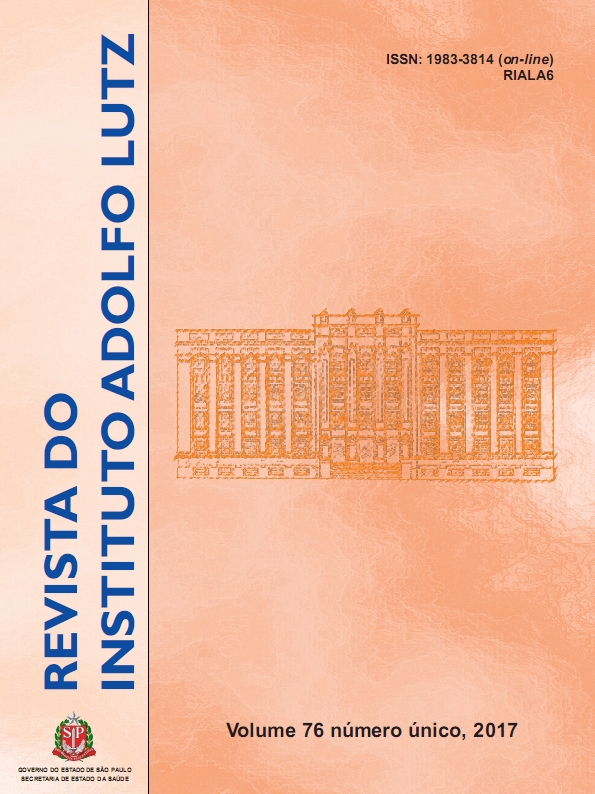Abstract
The genetic programs have developed the varieties of maize seed, with features that provide greater resistance to the planting adversity, thus to carry out the extension of their cultivation at varied weather conditions. Microscopic analysis of grain is a relevant tool for characterizing the raw materials and the starch modifications. Taking into account the fact of the use of genetically modified organisms (GMOs) in food being still controversial, especially for consumers, and also owing to their significant increased use as ingredients in food products, the present study investigated the possibility in detecting the characteristics variations of transgenic corn starch grains by microscopy, in comparison with the conventional corn starch grains. The results showed significant differences between the conventional starch grains-extracted maize and those derived from transgenic maize. Conventional corn-extracted starch was characterized mostly by the presence of polyhedral shaped beads, some of them slightly cambered, with Starry format hilum, while the extracted starch from genetically modified maize grain, the hilum showed a linear format, punctual or absent. These findings will be valuable for conducting studies and for performing food products characterization and identification.
References
1. Associação Brasileira das Indústrias de Milho - ABIMILHO. O cereal que enriquece a alimentação humana. [acesso 2015 Out 7]. Disponível em: [http://www.abimilho.com.br/milho/cereal].
2. Empresa Brasileira de Pesquisa Agropecuária – EMBRAPA. Milho e Sorgo. Cultivo do milho. [acesso 2015 Out 21]. Disponível em: [http://www.cnpms.embrapa.br/publicacoes/milho_5_ed/index.htm]. Federação das Indústrias do Estado de São Paulo
3. Federação das Indústrias do Estado de São Paulo - FIESP. Informativo DEAGRO, SAFRA mundial de milho 2015/16, 9º Levantamento do USDA.[acesso 2016 Jan 15]. Disponível em: [http://az545403.vo.msecnd.net/uploads/2016/01/boletim_milho_janeiro2016.pdf ].
4. Peter M, Paraginski RT, Santos RF, Rockenbach BA, Villanova FA, Oliveira M. Propriedades tecnológicas e de cristalinidade de amido extraído de grãos de milho armazenados em diferentes temperaturas. VI Conferência Brasileira de Pós-Colheita; outubro de 2014; Maringá: Anais. p. 692-9.
5. Carneiro AA, Carneiro NP, Carvalho CHS, Vasconcelos MJV, Paiva E, Lopes MA. Milho transgênico. Biotecnologia, Ciência & Desenvolvimento. 2000;3(15):42-6. [acesso 2015 Jan 15]. Disponível em: [https://ainfo.cnptia.embrapa.br/digital/bitstream/item/67512/1/Milho-transgenico.pdf ].
6. Wolf MJ, Buzan CL, Macmasters MM, Rist CE. Structure of the mature corn kernel. 1. Gross anatomy and structural relationships.Cereal Chem. 1952;29(5):321-33
7. Glover DV, Mertz ET. In: Olson RA, Frey KJ. Corn. Nutritional quality of cereal grains: genetic and agronomic improvement. Madison: ASA; 1987. p. 183-336.
8. Nguyen QD, Jensen CTB, Kristensen PG. Experimental 8. and modelling studies of the flow properties of maize and waxy maize starch pastes. Chem Eng J. 1998;70:165-71.
9. Sandhu KS, Singh N, Lim ST. A comparison of native and acid thinned normal and waxy corn starches: Physicochemical, thermal, morphological and pasting properties. LWT–Food Sci Technol. 2007;40(9):1527-36.
10. Singh N, Singh J, Kaur L, Sodhi NS, Gill BS. Morphological, thermal and rheological properties of starches from different botanical sources. Food Chem. 2003;81(2):219-31.
11. Flint O. Microscopía de los alimentos: manual de métodos prácticos utilizando la microscopía óptica. Zaragoza: Acribia; 1996.
12. Sahai D, Jackson DS. Structural and chemical properties of native corn starch granules. Starch/Starke. 1996;48(7/8):249-55. [DOI: http:/dx.doi.org/10.1002/star.19960480703].
13. Li JH, Vasanthan T, Rossnagel B, Hoover R. Starch from hull-less barley: I. Granule morphology, composition and amylopectin structure. Food Chem. 2001;74(4):395-405.
14. Barcelo P, Lazzeri PA Transformation of cereals by microprojectile bombardment of immature inflorescence and scutellum tissues. In: Jones H. Plant gene transfer and expression protocols. New York: Springer; 1995. p.113-23.
15. Netto DAM, Andrade RV. Recursos fitogenéticos de milho, sorgo e milheto. Sete Lagoas: Embrapa Milho e Sorgo; 2000. [acesso 2015 Jan 15]. Disponível em: [https://ainfo.cnptia.embrapa.br/digital/bitstream/item/30832/1/doc-2.pdf ].
16. Rodrigues RMM, Atui MB, Correia M. Métodos de análise microscópica de alimentos: Isolamento de Elementos Histológicos. Vol. I. São Paulo: Letras & Letras; 1999.
17. Menezes Junior JBF. Investigação sobre o exame microscópico de algumas substâncias alimentícias. Rev Inst Adolfo Lutz. 1949;9(1/2):28-32.

This work is licensed under a Creative Commons Attribution 4.0 International License.
Copyright (c) 2017 Instituto Adolfo Lutz Journal
